RetroLisa
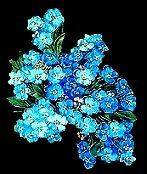 | 1910s
Music & Entertainment
part 2
| |
|
___________________________________________________________________________________________________________
|
|
|
RetroLisa
| ___________________________________________________________________ | __ | _____________________________ | _______ | Fun & Amusement
dancing
At society dinners and balls, the elegantly-clad dancers waltzed to beautiful music performed by orchestras. At more informal gatherings, guests enjoyed doing the Tango, Cakewalk, One-Step, Turkey Trot, Bunny Hug, Camel Walk, and Fox Trot. Other fun dances included the Envelope Flop, Gabby Glide, Hinky-Dink, and Kitchen Sink.
At first glance, the Fox Trot would appear to be just another dance with an animal name. It was actually introduced in 1914 by vaudeville performer Harry Fox while he was appearing at the New York Theatre. It became a national craze when it was adopted by dancers at the upstairs roof garden theater and by the famous dance team of Vernon and Irene Castle.
History Of The Fox Trot
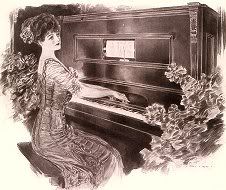
pianolas & piano rolls
Everyone loved a piano in the 1910s. Unfortunately, not everyone could play a piano. The music lover who lacked musical skill could buy a pianola to do the playing for him.
There were two types of pianolas: external piano players and enclosed player pianos. An external player was a separate unit that could be placed in front of a conventional piano keyboard. Enclosed players were modified pianos that played from inside.
Songs were encoded on perforated paper rolls, which were inserted into a sprocket device hidden behind the front panel. The player pianist pumped the foot pedals to activate playback.
Older and less expensive pianolas simply played the notes, while the operator controlled the speed and volume. Newer models could interpret the song by using a music roll that had the volume, tempo, and accents encoded along with the notes.
Each music roll was made by machine from a master roll. The notes were encoded on the master roll by an arranger marking the roll manually, or by a pianist playing the song on a special piano. The rolls that were cut by pianists were known as hand-played rolls or recorded rolls. When you operated a pianola using a recorded roll, you were hearing the song exactly as the artist originally performed it.
Music catalogs and labels listed the song title, composer, and original pianist. Sometimes the composer was the pianist. Scott Joplin, George Gershwin, and Jelly Roll Morton were some of the artists who cut piano rolls of their compositions.
The Player Piano Page
Gershwin & The Production Of Piano Rolls
|
|

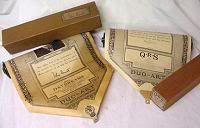
Piano rolls were kept in individual cardboard boxes and could be purchased at the music store or by mail order
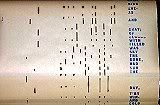
Word rolls had the lyrics printed on them so you could sing along
|
radio
In the 1910s, the airwaves were buzzing with the dots and dashes of wireless Morse Code. During this decade, several Morse Code stations installed audio equipment and began conducting voice transmissions. Wireless operators and amateur tinkerers could hear music and speech through their headphones, if they were lucky enough to live near one of these experimental voice stations.
During World War I, most civilian wireless stations were shut down or taken over by the government. Audio technology made great strides during the war, and when the stations reopened, they began to focus on audio broadcasting in earnest.
stations broadcasting audio in the 1910s
• 2XG: Bronx station launched by Lee De Forest in 1907 and licensed in 1915
• 6XF: Experimental station created in 1909 at the College of Engineering and Wireless in San Jose, licensed in 1916
• 8XK: Home-based station near Pittsburgh formed in 1916 by Westinghouse engineer Frank Conrad
• 9XM: University of Wisconsin
• 1XE: Experimental station at Tufts University in Medford Hillside, Massachusetts
• 2XI: Schenectady, New York
• 2ZK: New Rochelle, New York
• 9ZP: Pierre, South Dakota
In the 1910s, programming consisted of unscheduled musical performances, speeches, phonograph concerts, and sports scores. Wireless buffs were eager to help by being listening posts for these experimental broadcasts.
Lee De Forest was a pioneer in the field of radio programming. In 1910, his New York voice station aired a series of live performances from the Metropolitan Opera, one of which starred the famous tenor Enrico Caruso. In 1916, his newly-licensed station transmitted a phonograph concert three times a week and sent out the first daily broadcasts. Later that year, he transmitted the 1916 Presidential election returns to 7,000 listeners in the New York area.
| |


|
_________________________________________________
|
|
|
RetroLisa
| _________________________________________________________ | __ | _______________________________________ | _______ | Live Entertainment
vaudeville
While some variety shows were in questionable taste, the vaudeville format was appropriate for everyone. Vaudeville was born in the 1880s and was the most popular form of live entertainment until the 1920s.
A typical vaudeville show consisted of seven to ten variety acts (the bill) and a starring act (the headliner). You could find nearly every type of entertainment on a vaudeville bill, including vocalists, comedy skits, jugglers, acrobats, magicians, comic singers, novelty acts, song and dance teams, short films, impressionists, and animal acts.
Most vaudeville theaters belonged to a circuit. Vaudeville circuits were theater chains that used the services of a booking office to audition new talent, coordinate tour schedules, and provide member theaters with acts. After an act made its debut, it signed up with a booking office and toured the country on a particular circuit.
Prominent circuits in the 1910s included the Pantages Circuit, the Keith-Albee Circuit, the Orpheum Circuit, the Loew Circuit, the Gus Sun Circuit, the Bert Levey Circuit, and the Sullivan-Considine Circuit.
Minstrel Shows
Vaudeville
What Was Chautauqua?
Chautauqua Photos
chautauqua
A Chautauqua was a unique form of entertainment that first became popular in the 1870s. Part camp meeting, part vaudeville, these shows emphasized education, cultural enrichment, and spiritual uplift. A typical program lasted several days and featured musicians, lecturers, variety acts, short films, and evangelists.
There were two types of Chautauquas....the Chautauqua assembly and the tent Chautauqua. An assembly was held yearly at a permanent Chautauqua park, where attendees made use of cottages, amphitheaters, and dining halls. Tent shows were sponsored by local cultural groups and took place at a temporary location, such as a city park or fairgrounds.
Chautauqua performers were managed by central booking offices and followed a circuit system similar to vaudeville. The Redpath Chautauqua was the largest circuit. Although there was a slight religious tone to the presentations, there was always enough secular entertainment to appeal to everyone.
minstrel shows
"Because the American people are a laughter-loving nation, the minstrel show will be popular forever."
--1916 newspaper article
The minstrel show was born in the 1840s and was the first uniquely American entertainment form. These variety productions used songs, dances, and comedy skits to satirize modern society and make fun of black people.
In the 1910s, audiences were beginning to make more sophisticated entertainment choices, and the popularity of the minstrel show was fading. Some people, however, were reluctant to see the format disappear. Minstrel troupes still enjoyed modest success in areas where old-fashioned attitudes tended to prevail. When organizations staged amateur productions, they often chose the minstrel format.
The entire program was held together by the interlocutor, who functioned as a comedian and master of ceremonies. Each show followed the same prescribed format and included the stock characters of Jim Crow, Zip Coon, Tambo, and Bones. Most of the acts featured performers in blackface acting like buffoons and reinforcing black stereotypes.
In the 1910s, the skits also dealt with timely issues such as women's suffrage, immigration, city life, fashions, and morality.
| |
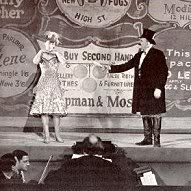
Vaudeville

Chautauqua
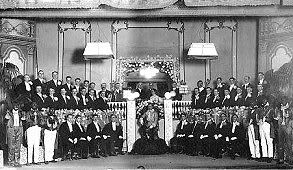
Minstrel troupe
|
__________________________________________
|
|
|
